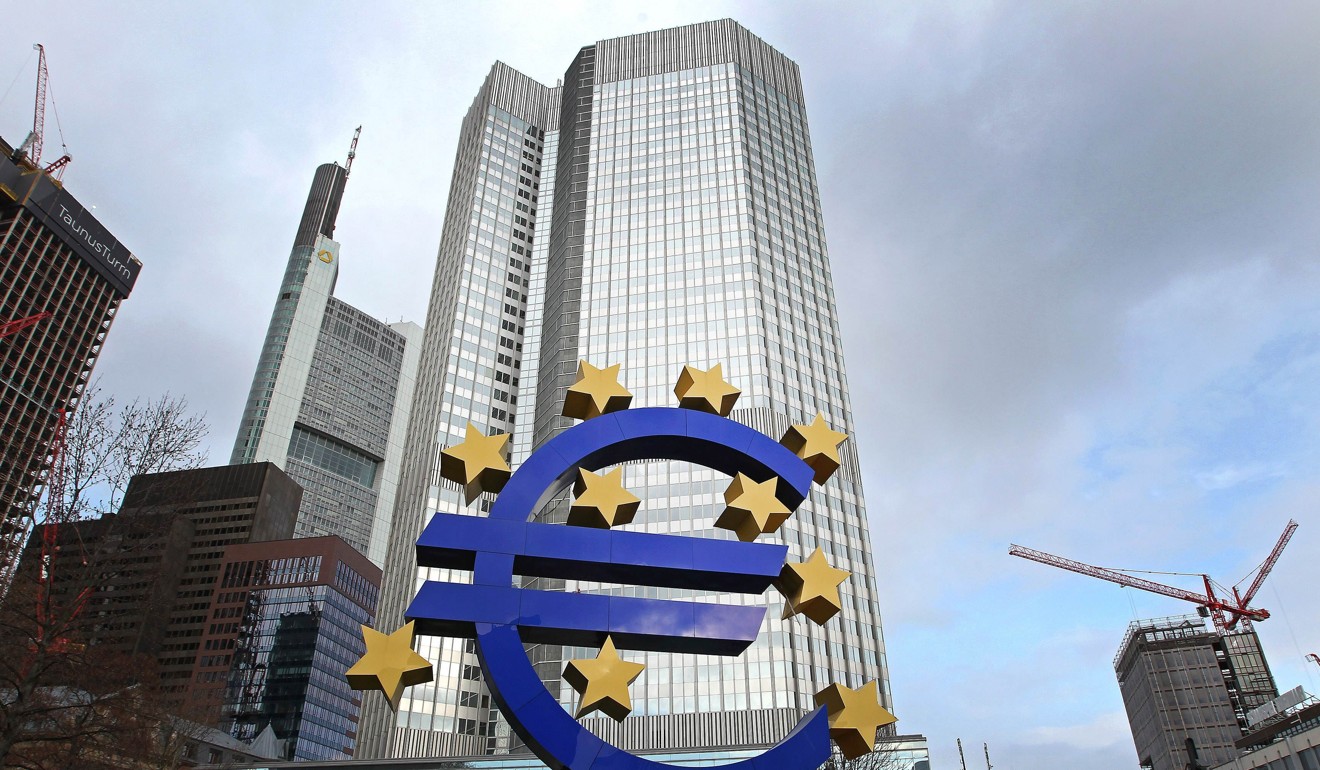
Sharper-than-expected rise in inflation this year could wreak havoc on debt markets
Faster wage growth brought on by a continued global economic upturn could upset the apple cart despite bullish prospects for year

The global economy has begun the year with a bang. A series of closely watched surveys published this week shows output in the manufacturing sector is struggling to keep pace with demand.
In the United States, manufacturing activity in December expanded at its fastest clip in 13 years, while in the euro zone output grew at its briskest pace since 1997. European countries “dominated the [manufacturing] growth rankings for much of 2017”, according to IHS Markit, a data provider that produced one of the surveys.
In China, manufacturing output, although weaker, grew at its fastest pace since August, with stronger increases in output and new orders, and capacity pressures continuing to build.
Even in Britain, whose economy has slowed markedly because of uncertainty associated with its departure from the European Union, factory output in the final quarter of last year was the strongest in three-and-a-half years.
The buoyant growth rates mean that at a global level manufacturing output is now running at a seven-year high, “with the robust upswing being carried over into 2018”, the JPMorgan Global Manufacturing PMI notes.

If these are not propitious conditions for a pickup in inflation, then what are?
Government bond markets, which have been under strain over the past few months partly because of tax reforms signed into law by US President Donald Trump just before Christmas, came under more pressure on Tuesday as traders and investors reassessed their expectations for consumer prices.
As the first month of trading in 2018 gets under way, there are growing signs that inflation will be the wild card for financial markets this year – especially with oil prices having shot up by more than 45 per cent since June and now trading at their highest level since April 2015.
The outlook for inflation, particularly in the US, is the single most important determinant of global asset prices this year – yet the one which, for some time now, has been the most perplexing.
The uncertain prospects for consumer prices stem from the much-talked-about absence of inflationary pressures despite significant tightening in labour markets in advanced economies, especially in the US, which is at, or very close to, full employment.
The Federal Reserve’s preferred measure of inflation, which excludes volatile food and energy prices, stood at just 1.5 per cent in November, a tad higher than in the previous two months but the seventh year in a row in which inflation has undershot the Fed’s 2 per cent target.
In the euro zone, the core inflation rate is even lower, having dropped to a mere 0.9 per cent, down from 1.2 per cent in August and less than half the target of the European Central Bank. Japan’s core inflation rate, meanwhile, is barely above zero despite a growing shortage of workers as unemployment stands at a 24-year low.
Inflation is being held down partly by sluggish wage growth in developed economies, casting doubt on the link between the tightness of labour markets and the rate of inflation, the so-called Phillips Curve.

Markets have been taking the view that inflation poses little risk, with bond investors pricing in inflation at slightly below 2 per cent for the next decade, according to a market gauge of US inflation known as the 10-year breakeven rate. Yet this measure has been ticking up noticeably of late, as has the yield on benchmark 10-year treasuries, which now stands at about 2.5 per cent.
In the fairy tale, Goldilocks is eventually frightened by three bears. Bond investors can only hope that there is no inflation bear to fret about
These are still extremely low levels by historical standards. But this is precisely why a sharper-than-expected rise in inflation this year – a distinct possibility if the global economic upturn continues apace, increasing the scope for faster wage growth – could wreak havoc on debt markets, particularly given how expensive bonds have become.
Make no mistake, inflation could upset the apple cart at a time when most market participants remain bullish about the prospects for 2018.
Still, structural factors, such as globalisation and technological advances, are, even by the Fed’s own admission, suppressing inflation and could persist for a considerable period of time. Citigroup believes these forces “are likely to prevent wage growth in advanced economies [from] return[ing] to pre-2008 levels any time soon”.
Inflation has so far been the dog that did not bark, producing a “Goldilocks” investment regime of stronger-than-anticipated growth and low interest rates anchored by subdued inflation.
In the fairy tale, Goldilocks is eventually frightened by three bears. Bond investors can only hope that there is no inflation bear to fret about.
Nicholas Spiro is a partner at Lauressa Advisory